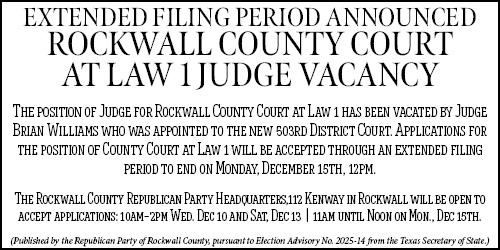
…and a plea to elevate the human condition
August 27, 2012 – On August 25, 2012 America lost one of its greatest heroes. The first of our species to step foot on another celestial body in our Universe died from complications related to heart surgery for clogged arteries. Our planet should mourn the loss of this warrior, patriot and explorer and yes – spaceman.
Neil Armstrong flew 78 combat missions in the F9F Panther into northern Korea from the deck of the USS Essex during the most difficult days and nights of the Korean War. The man we recall as a great astronaut was not only as an aerospace professor, but also a lion. During the Korean War, Armstrong repeatedly flew in the face of death from the deck of an aircraft carrier and returned as a quiet professional.
This week’s column began, not as an homage to America’s greatest hero; rather it was planned to be an objective assessment of the Mars Science Lab based on its cost versus the potential to identify water on the most Earthlike planet in our Solar System.

After conducting only the first few moments of research on the life of Neil Armstrong, it became overwhelmingly obvious that we share so many similar early life experiences that the similarities are implausible. The only significant difference between us is that Armstrong was born on August 5, 1930, near Wapakoneta, Ohio which was 33 years and a thousand miles from my own entry to Earth which took place in Norwich, CT in 1963 at the home shown here.
Realizing that we shared so many similar activities caused me to dig more deeply into Armstrong’s life, perhaps as a way to learn more about my own existence. Regardless of the means, Armstrong’s life served as an inspiration to me and so many young people who today are living and working as adults, parents and fellow Americans. Please in no way should the following be considered as an attempt to compare our accomplishments in life or to compare the quality of our lives as I’m just a regular guy, while Neil Armstrong was a great hero. The following is submitted with good reason and I hope you will muddle through and get to the big finish and appreciate the importance of giving back to the society from whence we came.
As the oldest child (I was the baby) of Stephen and Viola Engel Armstrong. Airplanes drew Neil’s interest from the age of six, when he took his first airplane ride. Similarly, my first powered aircraft flight occurred at age six when I rode in a helicopter at Expo in Montreal, Canada with my father and brother. Later, my first flying lesson of what would become many, took place at age 13. This is perhaps the only area I preceded Armstrong, for he began taking flying lessons at age 14. We both soloed airplanes on our sixteenth birthdays. I was issued a pilot’s license at age 17, the soonest legal date, as did Armstrong. In extraordinary coincidence, we both built basement wind tunnels to experiment on our newfound aerospace passion. My wind tunnel was fantastic, the structure a living, breathing tube of my own design that contained formers and stringers of balsa wood wrapped in aircraft wing paper and covered in dope for strength and elasticity just like a real airplane wing. The wind tunnel was powered with a ½ horsepower building exhaust fan and contained a test chamber to prove the efficacy of various wing structures at low and high angles of attack. Manometers containing red fluid measured and indicated pressure changes over the wing surfaces being tested. To this day I remain proud of that self-designed wind tunnel.
There is indeed a common thread that may not be evident. The most significant mutual life experience we shared occurred as very young children when both of us looked up to the night sky and wondered. I do not know what Neil Armstrong wondered, but my own wonders were, how big, what, how and why? At once I was afraid that no one would show me these things, but very soon I was rewarded with a Sears telescope, a refractor on a tripod of dubious construction and lesser optical quality. So it was that we both received telescopes at a young age and began our lifelong exploration.
As we grew into adulthood, both young men undertook university studies, clearly focused on aeronautical science (that was the title of my undergraduate degree) and later became military pilots who flew in combat for their nation.
Thankfully, Neil Armstrong went on to become the great astronaut that America needed to fulfill the command of our great President, John Fitzgerald Kennedy: “To land a man on the Moon in this decade and return him safely to Earth.”
There is no better engineering requirements statement, nor any better way to move a nation to defeat a great opponent in an ideological struggle that could at a moment turn hot and become our annihilation. This is not the place to argue that the 1960s space race was really just an analog of nuclear warhead lifting capability. That serious discussion is for another time.

My own fascination with space has fully evolved into my life’s Personal Mission Statement:
“To continuously elevate the human condition by increasing our sense of place in the Universe through the use of technology and human interaction.”
School starts this week for millions of students. I will continue to practice my personal mission in the hopes of inspiring the next great explorer of our species or enlightening that person’s parents. Perhaps this great explorer will devise a new propulsion system or identify the key to life beyond our own planet. Regardless of the who or what, I hope that the why, that is to elevate the human condition, is fully realized.
In my own life I cannot recall a single person outside my family who inspired or influenced me by taking the time out of a day or night to help me learn about the cosmos. Carl Sagan was the public figure whose wildly popular television series, Cosmos had tremendous impact on me. However, by the time Cosmos aired, I was already well on my way to a serious life of study and exploration.
So it is that my father and mother were the most important people in my life and my source of inspiration. I’m eternally greatful and thankful for their inspiration. Neither of my parents graduated from high school, let alone college, but they both served the nation, one as a submarine navigator and the other as a factory manager, stitching parachutes for the nation’s 82d and 101st Airborne divisions.
After the Great War II, they partnered in a successful sewing machine business, actually operating a chain of stores at one point. Only as an adult did I learn to appreciate my father’s wartime exploits, known as Sea Stories. My father’s exploits were told time and again, but only when I read about them in the book, War Patrols of the USS Flasher by William R. McCants, did I realize that my own legacy was that of warrior, for the Flasher remains at the pinnacle of accomplishment among submarines having sunk the most enemy shipping of any such vessel. Because of the way our world has evolved, it is unlikely that any other submarine will ever sink more than a hundred thousand tons of enemy ships (Flasher officially sank 100,231 tons of enemy ships according to the post war JANAC study) unless then Chinese happen to sink an American aircraft carrier in the Pacific Ocean (today’s Nimitz Class supercarriers weigh in at 102,000 tons).
As I retired from active military duty after 20-plus years of service in 2009, my bones grow weary of conflict. It should be that as time goes on, our species moves beyond internal conflict. However, we seem to be better at killing each other than we are at saving each other. More importantly, we seem to be more skilled at taming and beating the planet Earth, our home, into submission than we are at caring for her. If we do not learn to get along and care for our home planet, then we are doomed to a short lived legacy here on our own home planet.
Let the passing of an American hero of the 20th century move each of us to renew ourselves for the next generation as we take them forward wile we inspire that next young astronaut. So it is that the similarities between the Astronaut and the regular guy, now living in Rockwall, are all about their lifelong efforts to inspire that next great explorer.

Our Universe Today is a column written by Blue Ribbon News special contributor, Max Corneau, aka AstroDad, of Rockwall.
Max retired from the U.S. Army in 2009 as a Lieutenant Colonel, Senior Space Operations Officer and Master Aviator. He amassed over 3,200 hours as a pilot of Special Electronic Mission Airplanes. Since 2004 he has been a NASA/JPL Solar System Ambassador, is a Master of Astronomical Outreach through the Astronomcial League and built his own astronomical observatory. His amazing images can be seen at AstroDad.com.
RELATED COLUMNS BY ASTRODAD:
AstroDad shares insight on Curiosity’s successful Mars landing
NASA launches Mars Science Lab
Making sense of science: Higgs Boson Explained
When the sun belches
How to buy a telescope: Part 1 and Part 2
Earth’s recent asteroid encounter is closest in 200 years
To submit your news and events or a guest column on your area of expertise, email editor@BlueRibbonNews.com.




